Five extraordinary night-time experiences around the world
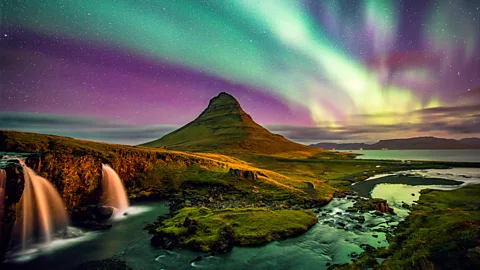 Russell Edwards/ Getty Images
Russell Edwards/ Getty ImagesFrom fiery festivals to nature's most dazzling "sky-dance", interest in the night skies is booming, with "noctourism" poised to be a major travel trend in 2025.
Interest in the night skies is booming. Booking.com recently named "noctourism" as a top travel trend for 2025, with their survey of more than 27,000 travellers finding that around two-thirds have considered going to "darker sky destinations" to experience things like starbathing (lying down and looking at the night skies) and witnessing once-in-a-lifetime cosmic events.
"The cool thing about night adventures is you see so many different sides to a destination, by just staying up late or rising early," says Stephanie Vermillon, author of the new book 100 Nights Of A Lifetime: The World's Ultimate Adventures After Dark. "Our senses are heightened, and there are things you see at night that you don't see any other time, so everything feels exciting and new."
It was a 2010 trip to Morocco that sparked Vermillon's interest in all things nocturnal. "I grew up in Dayton, Ohio, which has terrible light pollution," she tells the BBC. "Then I went to the Sahara Desert and camped under the stars – I saw the Milky Way and two dozen shooting stars that night. I went home, took an astronomy class and later started hunting Northern Lights, which got me curious about what else happens around the world after dark."
Vermillon believes that major events such as the April 2024 total solar eclipse or the 2024-2025 peak in aurora activity has led to a "bump" in the number of people wanting to experience dark skies. There are also now more than 200 Dark Sky Reserves across the globe. "The great thing about the night sky is the perspective it gives you – it's humbling and grounding," she says. "You can experience pure awe."
Starry skies and aurora borealis might be the headline acts, but there's plenty more to do after dark in cities or out in nature. "You see a city so differently at night," Vermillon says. "I think of it as a city letting its hair down – it's more relaxed. I've also done night safaris, where it's more about listening than just seeing, and I've seen water sparkling with bioluminescence, which looks like magic. Everything at night has a little extra sparkle."
Here are five of Vermillon's favourite after-dark experiences, from fiery cultural festivals to nature's greatest sky dance.
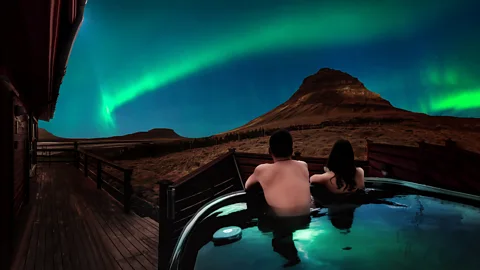 Sarote Pruksachat/ Getty Images
Sarote Pruksachat/ Getty Images1. Relax with hot spring aurora-hunting in Iceland
Lucky travellers in the right place at the right time can witness one of the most unforgettable experiences on Earth: the aurora borealis, or Northern Lights. Created by charged particles from the Sun colliding with the Earth's atmosphere, the main activity occurs above Earth's magnetic poles, with Iceland right in the thick of the action. During the Northern Lights season (September to April), colourful displays streak across the skies for more than 100 nights, as long as cloud cover doesn't impinge. "I've never felt goosebumps from nature more than when I'm watching the Northern Lights," says Vermillon. "You're watching nature dance. It's the most magical thing."
Strong storms can be seen with the naked eye, though many photographers also create wondrous images using long exposures on cameras. Witnessing or capturing the aurora usually means wrapping up in thick clothing and waiting for hours on a bracing hillside or glacier, far from towns or cities. But there's a warmer alternative: kicking back in Iceland's naturally heated pools. The land of fire and ice straddles the Mid-Atlantic Ridge, with geothermal energy from far below ground creating more than 700 hot springs and pools. "You can see the Northern Lights in warmth and comfort," advises Vermillon. "The water's often over 100F (38C), so you can see your breath and your hair is frosting, but the water heats you from your core. I got out of the water in a swimsuit to check my camera and I wasn't cold at all."
Vermillon particularly recommends Ion Adventure Hotel in Selfoss for outdoor pools overlooking lava fields and snow-capped mountains, noting their Northern Lights Bar that serves a Sweet Black Death cocktail; and Heydalur, a guesthouse on a horse farm in the craggy Westfjords, where shaggy white ponies amble around the open-all-night hot pools.
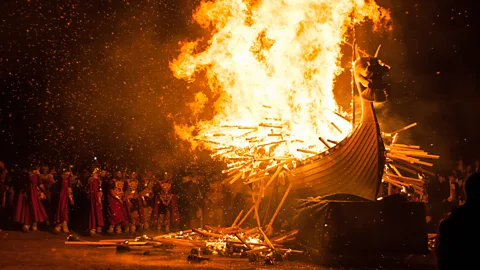 AndrewJ/ Adobe Stock
AndrewJ/ Adobe Stock2. Attend the Up Helly Aa festival in Scotland
Located far out in the North Sea, the Shetland Islands are part of Scotland. But the islands are also geographically and culturally close to Scandinavia. The annual Up Helly Aa festival, which takes place on the last Tuesday of January in Shetland's capital, Lerwick, is a fiery, boozy spectacle that celebrates the island's Viking heritage. Vikings settled here during the 8th and 9th Centuries and lived as farmers for around 600 years before the islands came under Scottish rule in the 15th Century.
After months of preparation, the midwinter celebration's main event is a torch-lit procession where around 1,000 "guizers" (local men) wearing Viking gear and other eye-catching costumes march through the streets, bringing with them a replica Viking longship that will later be set on fire in a grand spectacle. Afterwards, locals fill community halls and pubs for dancing, music and drinking into the early hours of the morning.
"So many cultural festivals are ancient, but this one started around 200 years ago, so it's relatively new," says Vermillon. "They created it as an ode to their Viking heritage. It's cool to see that pride in where people come from. Up Helly Aa's also special for the visuals: night, darkness and fire."
Smaller Up Helly Aa events also also take place across the islands from January to March.
Shetland's northerly location – closer to the Arctic Circle than London – means there's a decent chance of seeing the aurora in the winter months, known locally as the "mirrie dancers", from mirr, whichmeans "to shimmer".
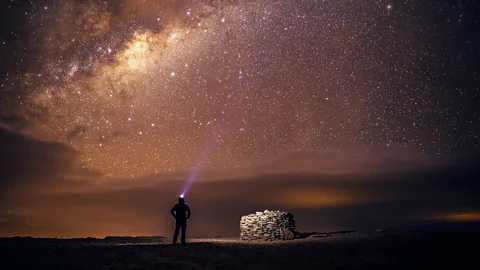 Eric Hanson/ Getty Images
Eric Hanson/ Getty Images3. Go desert stargazing in Atacama, Chile
The remote Atacama region in northern Chile is the driest nonpolar desert on Earth. With high elevations and an average of 300 clear, cloud-free nights a year, it's a renowned location for professional astronomers. The Atacama Large Millimeter/submillimeter Array (ALMA), one of the most powerful telescope systems anywhere on Earth, was constructed here to study the universe's great mysteries.
"Atacama has the clearest night skies I've ever seen, and clear skies for as many nights in a row as I've ever had," says Vermillon.
All this means that "there's a community of entrepreneurs who have created incredible experiences around stargazing", says Vermillon, including astrophotography tours and archaeoastronomy sessions featuring Indigenous stories about the cosmos, as well as private observatories where experts teach tourists about Southern Hemisphere constellations and more.
Visiting just before, during or after a new Moon is recommended for the darkest skies and most dramatic starscapes. "You see a blanket of stars, more stars than you've ever seen in your lifetime, with skies that are darker and more pinpricked than I've ever seen," says Vermillon. "But the landscape around you also makes you feel like you're out there among the stars – you look around and you feel like you're on Mars or on the Moon. NASA uses parts of Atacama to test for their missions for life on Mars because Atacama has such 'martian' landscapes. Atacama really is next-level."
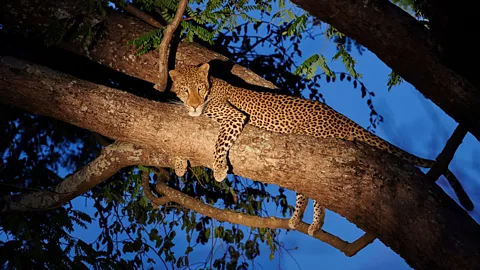 J Ritterbach/ Alamy
J Ritterbach/ Alamy4. Take a night safari in Zambia
"Reading the morning newspaper" is how wildlife guides across Africa refer to seeing animal tracks and other signs of activity that show what happened during the night, including scuffles or hunts. But taking a night safari means wildlife-lovers can watch, or listen to, the "news" for themselves.
More like this:
• Eight of the world's most extraordinary tiny hotel rooms
Night-time is when many creatures are most active, especially predators such as lions and leopards, who often rest during the heat of the day, and Vermillon recommends heading to Zambia to experience it. "Zambia has so many opportunities for night safaris," she says, picking out South Luangwa National Park, Lower Zambezi National Park and Kafue National Park (Zambia's oldest and largest national park) for chances to see big cats, elephants and other remarkable creatures. "You often see leopards lazing in trees by day, but to actually see a leopard stalking around at night, when there are so few people or vehicles, is so different," Vermillon says. "I like watching hyenas at night because you really see their 'creepy' character. I remember watching hyena circling a lion, trying to steal its prey – incredible."
Plenty of other animals are on the move after dark. "I love bush babies," says Vermillon. "They have such dramatic features – big ears and oversized, cartoon-like eyes – and they're a pretty common night-safari find because they're most active at night to avoid predators. I also love night drives for owls. With day safaris, so much is about seeing, but at night the pressure is off and it's more about listening, too, which is a less appreciated part of the safari experience. I love that period around 02:00 where you wake up in camp to hyena laughs or lion roars. You're, like, "Woah, where am I?". When you're out on night safaris, it's like you're out there among that. You're watching and listening as the animal kingdom does its thing."
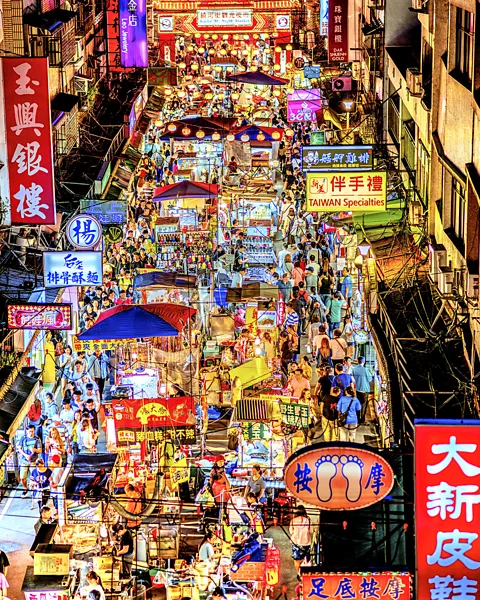 kecl/ Getty Images
kecl/ Getty Images5. Visit the night markets in Taiwan
The smells of Taiwan's food markets might hit you before the sights and sounds as dozens of stalls cook up delicacies, sending smoke and steam from grills, pots and pans drifting into the night air. There are more than 100 night markets across the country, with cooks selling xiaochi, the Chinese word for "snacks", to locals and visitors.
Many of the markets are open from late afternoon into the early hours of the morning or even sunrise, but they're particularly busy when local temples finish their services. "The majority of Taiwan's temples are Taoist and Buddhist," explains Vermillon. "The night markets usually have a historic temple in the market or right next to it and the vendors popped up around these gathering areas to sell goods and snacks. Over time, they grew into what they are today. People head there after the service to hang out and eat together. In the US, markets can feel touristy, weird or artificial, but I feel like these markets were built to serve a purpose: the community. The markets are built there authentically for people to gather after the temples but it's a cool experience for tourists, too."
There are more than 30 night markets in the capital, Taipei, including Shilin Night Market, the largest and most popular; and Raohe Night Market, among Taipei's oldest, dating to 1987.
"Almost every market has a different dish they're known for," says Vermillon. "The oyster omelette is a staple at Shilin Night Market. Raohe Night Market is known for its Fuzhou black pepper bun: a crispy pork bun topped with a black pepper sauce and onions." Brave travellers might also want to keep an eye, or nose, out for the fried "stinky tofu", a pungently aromatic fermented bean curd dish that is "very common in the after-hours markets".
The buzzing markets, which also selling clothing, art, crafts and other souvenirs, can get crowded. Be prepared to queue at the best stalls for speciality dishes.
100 Nights of a Lifetime: The World's Ultimate Adventures After Dark by Stephanie Vermillon is published by National Geographic.
--
If you liked this story, sign up for The Essential List newsletter – a handpicked selection of features, videos and can't-miss news, delivered to your inbox twice a week.
